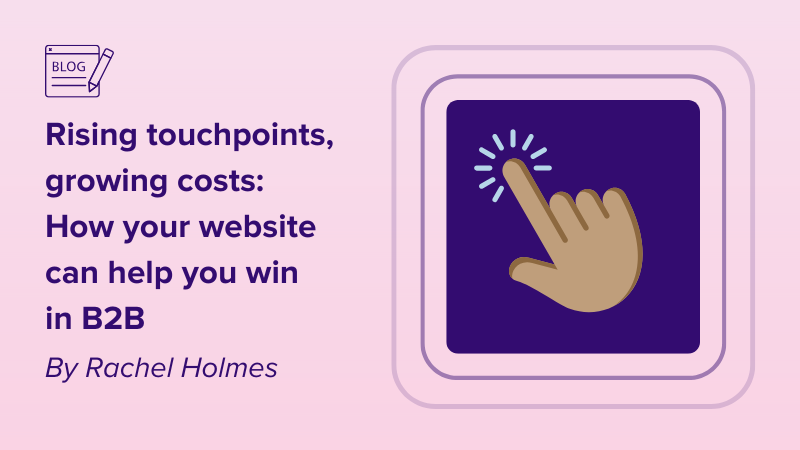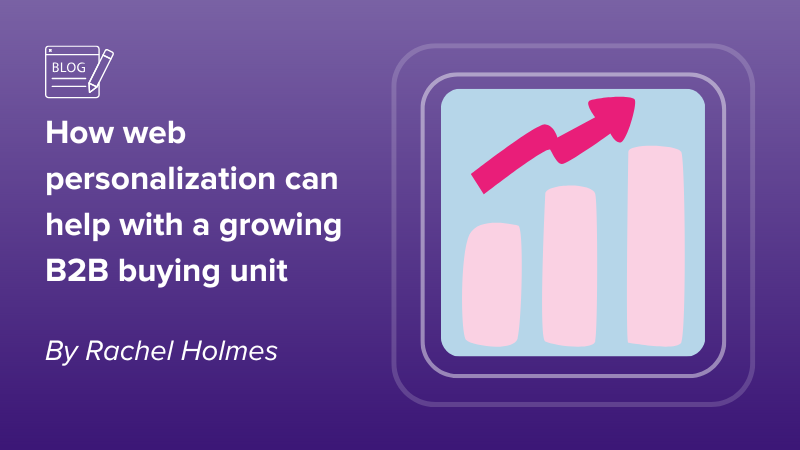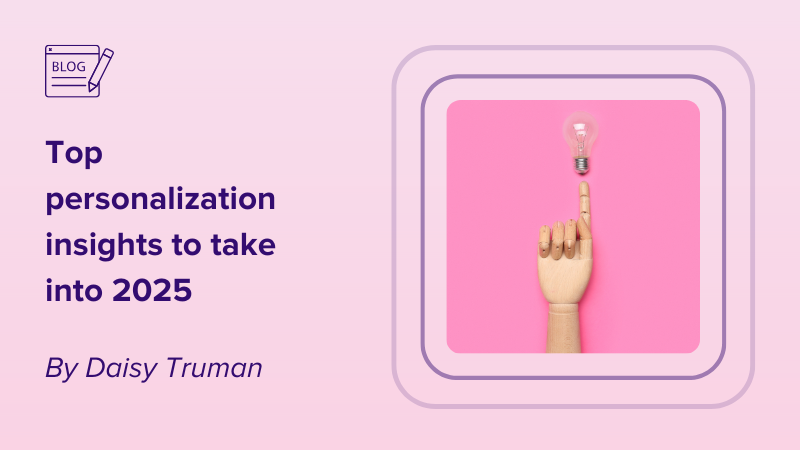We all know that today’s B2B buyers want a fast and frictionless buying experience personalized to them. But as B2B marketers it can feel like we’re falling short compared to our competitors or B2C counterparts. Our buyers are short of time and are used to getting personalized experiences as consumers and they expect it as B2B buyers and this expectation extends across all your channels. For many B2B brands the challenge here is that they’re personalizing everything but their website. So why is this a problem I hear you ask, here’s a couple of reasons for starters:
Firstly, around 94% of B2B buying journeys start online, meaning your website holds serious power to influence decisions long before prospects engage with you. Many B2B brands have responded to this but it needs to go further than segmented landing pages and live chat.
And secondly, because there isn’t one single thing we do as Marketers that doesn’t drive traffic to our website. We work hard, spend a lot of money to get visitors to our sites yet we accept that 95% of our visitors won’t convert.
So, what can we do to plan for and take the necessary steps so we aren’t left behind? To begin with let’s look at the website and as a starting point here’s 3 website personalization tips that will help your buyers make the best decision for them.
Tip one: Show your visitors they’re in the right place
Think about Paretos law: 80% of your outcomes come from 20% of your efforts and apply this to your sales funnel which means going wide with the top of the funnel first. Most commonly this means personalizing to new prospects to drive acquisition, as this is typically where the largest proportion of your web visitors sit. In practice this means starting with an all-companies personalization – it’s fast to setup and will deliver conversion uplifts just as fast! You can personalize by company name and industry to all matched businesses visiting your site – giving your buyers industry relevant information from their first visit.
Tip two: Get your visitors on the right journey
Once you have identified your key verticals you can prioritize these for richer experiences focused on recognition and help. The home page is the best place to start and from then on focus on high-traffic and high intent pages to maximize personalizing the buyer journey. Reinforce the buyers confidence with evidence of your experience with similar brands solving similar challenges.


How to get the maximum personalized buyer journey
Tip three: Create experiences driven by the visitor
Being able to deliver relevant content from a buyers first visit as soon they land on site, will increase conversions and deliver exceptional experiences for them, but what about when they return to site; how can we tailor the experience based on their previous actions? The answer is behavioral personalization – experiences driven by the visitor and the actions they take or did not take during previous visits. A simple example of this would be changing the primary CTA’s when a visitor returns – if they’ve recently seen a demo you don’t want to ask them to sign up for a demo, but you do want to share case studies, ROI calculators etc.
Ultimately we need to create buying experiences that our buyers want; recognize who they are, what they’re looking for and recommend the next best step for them uniquely. Your website doesn’t replace your sales people but it plays a vital part in getting your sales people in front of the right people at the right time.
If you’d like more detail about the tips above and examples of these in action check out Webeo’s How to get started on your b2b website personalisation journey guide here.





